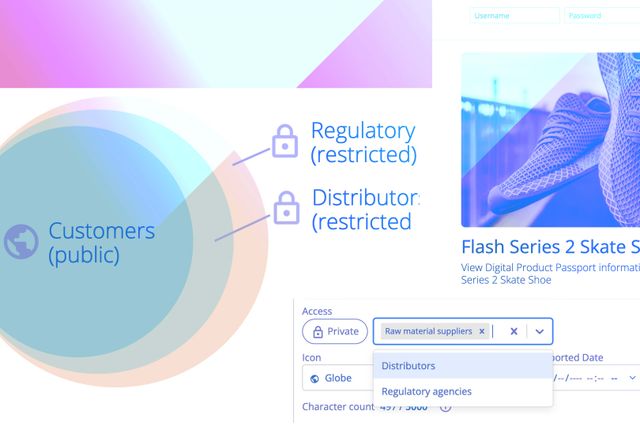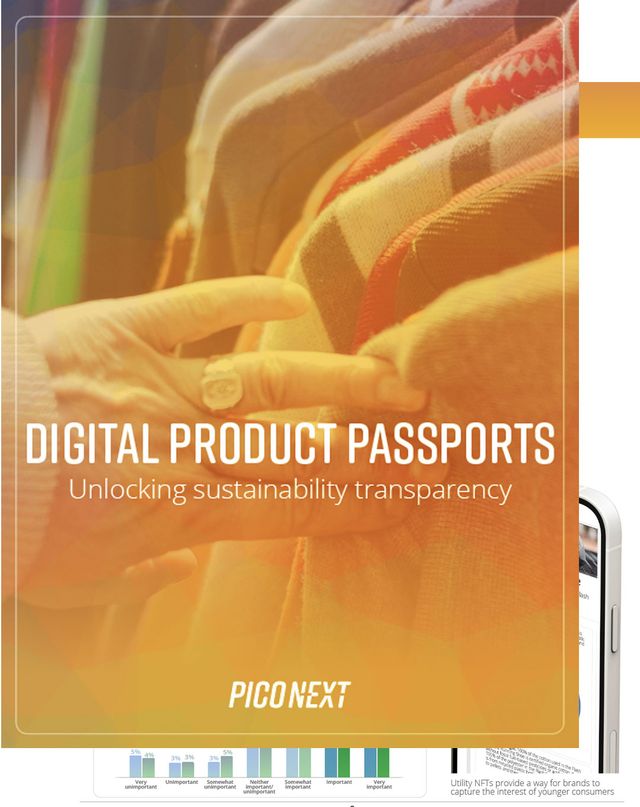As part of our June 2024 PicoNext release, we’re excited to announce new capabilities for companies to manage how users access private or restricted Digital Product Passport (DPP) data.
This new feature allows organisations to have fine-grained control on who can see certain categories of DPP data. For example, companies may wish to make certain product schematic diagrams available to their trusted distributor partners, but not publish them publicly due to competitive reasons. Or, certain categories of DPP data may need to be available to regulatory authorities (like granular part numbers) but may not be applicable for a certain wider audience.
Regulatory background on restricted DPP data
Digital Product Passports are seen as a way to drive further product circularity, and elevate the transparency of sustainability data across a product’s supply chain. Most products sold or distributed within the European Union will require a Digital Product Passport to be created, and the DPP will need to be accessed via a data carrier made available with the product (like scanning a QR code).
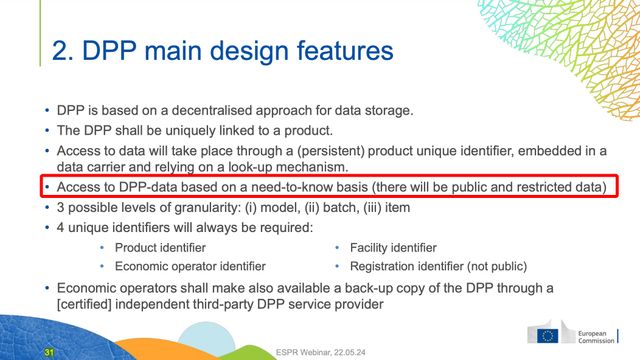
In a recent explanatory webinar about the ESPR legislation, the European Commission clarified that Digital Product Passports will need to support both publicly available and restricted data.1 This can include product data that is only made available to certain groups of people, like suppliers, distributors, recycling/disposal partners, or regulatory agencies.
Battery Directive: Example of restricted DPP data types
In fact, the E.U. Battery Directive – an initial implementation of the ESPR legislation that is seen as a precursor or model for legislation that will affect other product categories – describes the different data access models it expects.[^2] Most battery DPP data is expected to be made available publicly (like the material composition of the battery, its carbon footprint, recycled content information, and a variety of technical metrics.)
Some battery data, however, will be restricted to certain stakeholders. The E.U. describes these categories of restricted data access for batteries:
- Battery model information available to the European Commission (E.C.) and those with a legitimate interest (includes part numbers, dismantling information, and safety measures)
- Battery information available to the E.C. and certain regulatory bodies (includes compliance test reports)
- Individual battery information available to those with a legitimate interest (includes battery performance/durability data, battery health status, and data resulting from battery use)
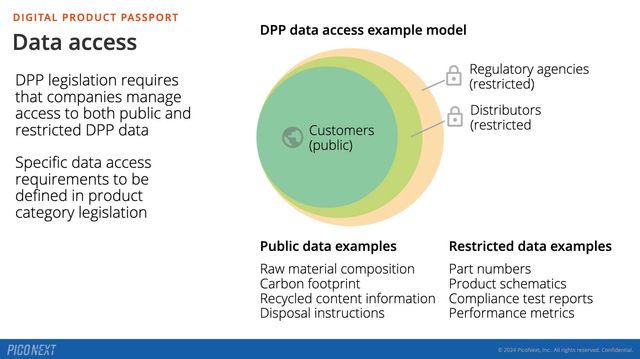
Restricted DPP data types in fashion, textile, electronics and other products
In the coming months and years, additional regulations (called “delegated acts”) will specify what information should be included in a Digital Product Passport in other product categories – as well as which data elements should have restricted access – including for these categories:
- Information and communications technology (ICT)
- Electronics
- Batteries & vehicles
- Textiles / Fashion
- Plastics
- Furniture
- Construction and buildings
- Chemicals
Restricting DPP data access using PicoNext
In the June 2024 release of PicoNext, we launched new features to support private/restricted access to Digital Product Passport data. Using a no-code interface, companies can manage access groups and granular DPP attribute data access levels. They can also display and render the appropriate DPP data based on the user’s access either through the pre-formatted PicoNext Token Explorer interface, or through a branded implementation using the PicoNext Enterprise APIs.
Creating DPP access groups
To get started with the restricted data workflow within PicoNext, DPP authors can create different access groups – like for suppliers, distributors, or regulatory bodies. Each of these access groups is associated with a username / password combination that will be used to display the appropriate restricted DPP information.
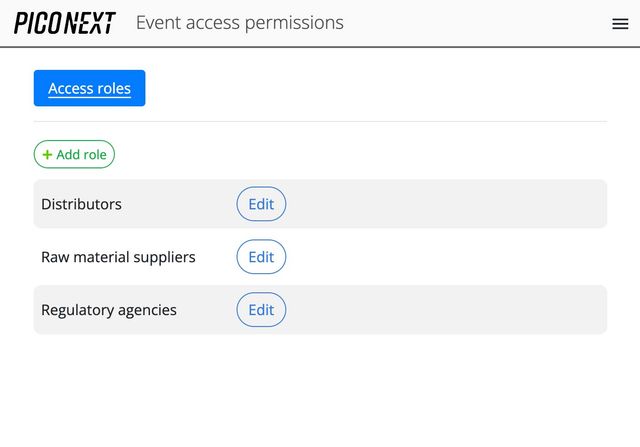
Associating DPP data attributes with access groups
Next, within DPP Planner, authors can determine which groups can access each DPP data attribute. For example, an author can set technical product raw material information as only available to recycling/disposal partners. Other DPP data, like compliance test reports, can be made available to other parties, like regulatory agencies. Most other DPP data can be made available publicly to users.
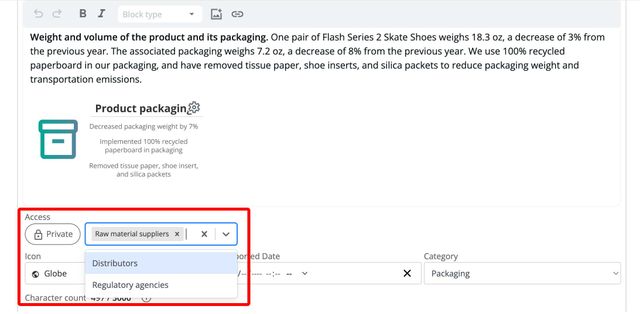
Managing user access to DPP restricted data
When users view a DPP, they can access restricted data by signing in with the username / password combination that is assigned to their access group. When viewing the DPP within the pre-formatted Token Explorer interface provided by PicoNext, the DPP will display the restricted data items for which the signed-in user has access, along with all publicly available DPP data. In the Token Explorer interface, a small lock icon indicates which data attributes have been set to private or restricted status.
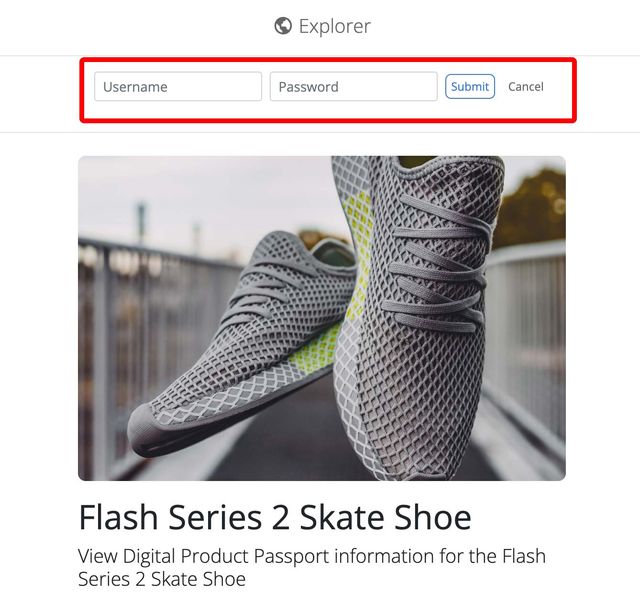
Using PicoNext APIs to display restricted data within a branded experience
Some companies use the PicoNext Enterprise APIs to display DPP data within a branded Web experience. In this case, customers can make an API call with the username / password combination to the PicoNext API, retrieve the DPP data for which the user has access, and then display it within their branded experience.
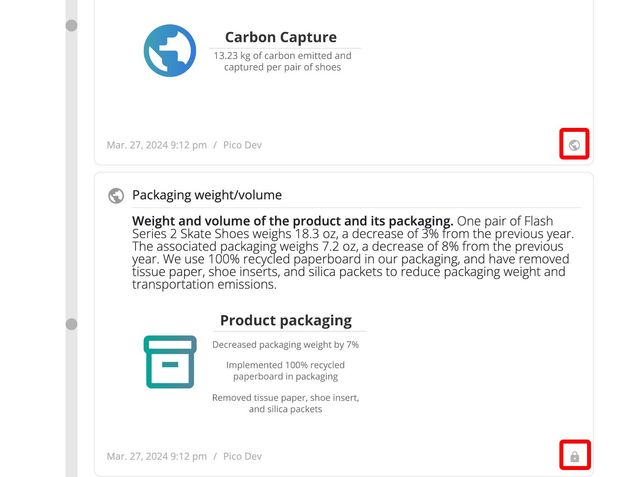
Restricted / Private data: Essential for upcoming DPP implementations
As category-specific Digital Product Passport regulations are rolled out through delegated acts in the coming months, restricted data elements are expected to be a key element that companies need to consider. Using PicoNext, brands can simplify the process for creating and managing restricted / private data within their DPPs using a no-code, end-to-end Digital Product Passport platform.
For more information
For more information on using restricted / private data within your Digital Product Passport, request a consultation with a PicoNext expert.
Request a consultation to learn more about restricted data in DPPs
path: "/your-path-here" articleTags: ["tag1", "tag2"]
[^2]: Regulation (EU) 2023/1542 of the European Parliament and of the Council of 12 July 2023 concerning batteries and waste batteries. Chapter IX “Digital Product Passport”, Article 78 “Technical design and operation of the battery passport”, eur-lex.europa.eu/eli/reg/2023/1542/oj
Footnotes
-
Ecodesign for Sustainable Products Regulation: Online Information Session. 22 May 2024. “DPP Main Design Features”. Slide 31. commission.europa.eu/document/download/c5db3b9e-23ae-42c8-a50a-b549f20a377d_en?filename=2024_05_22_EC%20Presentation%20ESPR%20Webinar_final.pdf ↩
